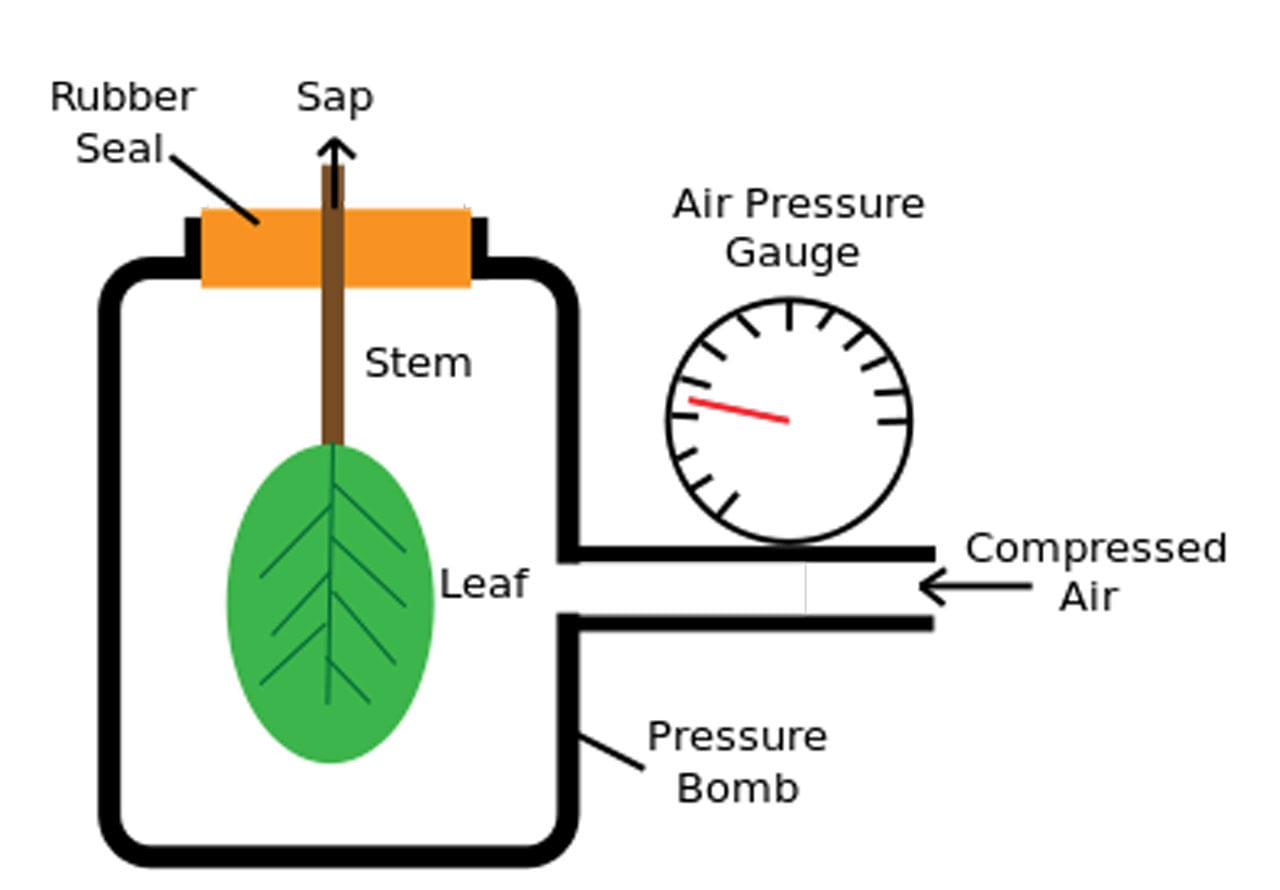How To Use A Pressure Bomb – Measuring Water In Trees With A Pressure Chamber


Managing fruit and nut trees can be a challenging task, especially when it comes to following a precise irritation schedule. With issues such as drought and water conservation at the forefront of many of our minds, it’s important to accurately assess the water needs of orchards. Luckily, there are tools available to help manage these valuable and delicious crops. Read on to learn how to use a pressure bomb for trees.
What is a Pressure Bomb?
A tree pressure chamber is a tool used to measure the water stress levels in trees. The gadget consists of a small chamber and outer pressure gauge. First, a leaf sample is collected. This is usually done by selecting a leaf and enclosing it in a special envelope. In the early afternoon, when demand for water is at its highest, the leaf is picked from the tree so that measurements can be taken. The leaf or small stem piece is placed into the chamber. The leaf stem (petiole) protrudes from the chamber and is separated by a valve. Pressure is then applied until water appears from the leaf stem. The appearance of water from leaf stem relates directly to the amount of water stress in which the tree is experiencing. High pressure readings indicate a great need for water, while lower readings show less stress on the trees. Readings allow farmers to fulfill the specific water needs of trees in relation to the current conditions in the orchard, thus, making the tree pressure chamber an invaluable tool for proper orchard management. Although there are a few different methods in which farmers take pressure readings from this device, growers should always take proper safety precautions when doing so. Depending upon the state of water stress, these pressure chambers can reach extremely high PSI readings. Hence, the colloquial name, “pressure bomb.” While not common, chamber failure can result in serious injury. Proper training and purchase from a reputable source is vitally important when considering the use of this tool for measuring water in trees.
Sign up for the Gardening Know How newsletter today and receive a free copy of our e-book "How to Grow Delicious Tomatoes".

Tonya Barnett has been gardening for 13 years. Flowers are her passion. She has transformed her backyard into a cut flower garden, which she regularly chronicles on her YouTube channel http://www.youtube.com/@tonyawiththeflowers.